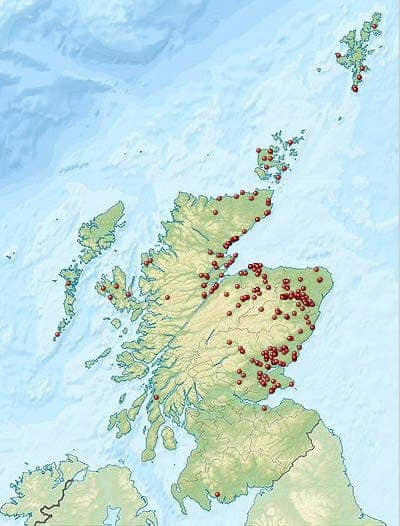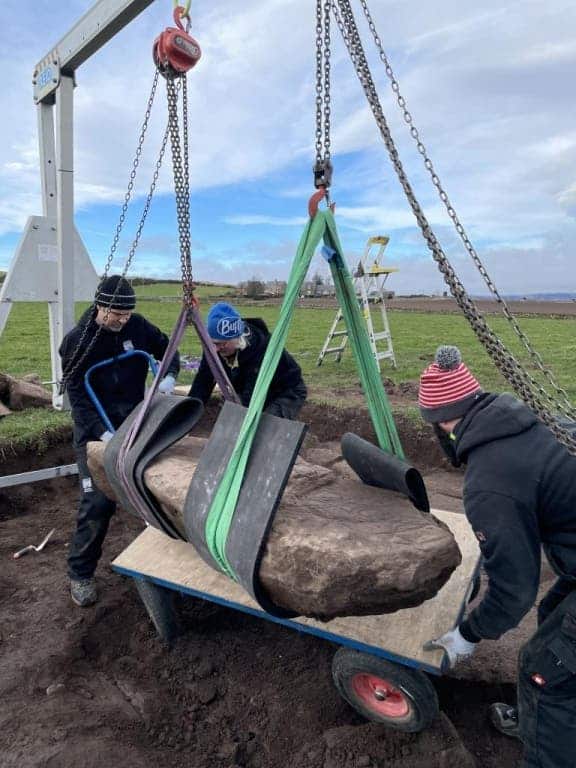
What seemed like an eventful evening turned into an emotional discovery for the history books after archeologists in Scotland came upon a stone covered with ancient geometric carvings. The symbols were etched in stone by the Picts, Scotland’s indigenous people, about 1,500 years ago.
The 5.5-foot-long (1.7-meter) stone artifact was discovered in Aberlemno, a parish and small village in the Scottish council area of Angus. The site was already famous for four previously discovered Pictish carvings from between 500 AD and 800 AD, which exhibit a range of symbols, from Pictish symbols to overtly Christian iconography.
Fierce people who a strong culture
For a very long time, the ancient Roman Empire wanted to seize Scotland, known during Roman times as Caledonia. The province was the site of many enticing resources, such as lead, silver, and gold. It was also a matter of national pride for the Romans, who loathed being denied glory by some ‘savages’.
Despite their best efforts, the Romans never really conquered the whole of Scotland. The farthest Roman frontier in Britain was marked by the Antonine Wall, which was erected in 140 AD between the Firth of Forth and the Firth of Clyde, only to be abandoned two decades later following constant raiding by Caledonia’s most ferocious clans, the Picts.
The name given to these northern people means ‘Painted Ones’ in Latin. The Picts constituted the largest kingdom in Dark Age Scotland until they disappeared from history at the end of the first millennium, their culture having been assimilated by the Gaels. But although not very much is known about these people who dominated Scotland for centuries, evidence suggests that Pictish culture was rich, perhaps with its own written language in place as early as 1,700 years ago, a 2018 study found.

It’s unclear what the geometric symbols carved in the newly found stone at Aberlemno represent, which include abstract symbols in the shape of a comb and a mirror, a crescent, double discs, and triple ovals. According to Gordon Noble, excavation leader and a professor of archaeology at the University of Aberdeen, the most plausible explanation is that the symbols represented Pictish names, although there’s no hard evidence at the moment to back this claim. Some of these symbols overlap with one another, which suggests some were added later in different time periods.
A tearful discovery

The extraordinary find was made while the archaeologists were surveying the site as part of a five-year investigation into early medieval kingdoms in northern Britain in Ireland. Researchers had deployed geophysical equipment to the area, which they used to look for signs of any potential object of interest beneath the ground without having to dig an inch. The radar eventually picked up an anomaly that looked like it might be something interesting, perhaps the remains of a settlement, and the archaeologists were eager to work.
Unfortunately, this was early 2020 when the pandemic was sweeping Britain and there were still many frightening unknowns. The archaeologists would have to wait a couple of months before they could get back to Aberlemno — and all that anticipation eventually paid off.
At the bottom of the pit they dug, the archaeologists hit a stone, which they expected to be the remnants of some wall. But when they brushed the dirt off, everyone freaked out. The stone was covered in symbols, definitely of Pictish origin.
“There are only around 200 of these monuments known. They are occasionally dug up by farmers ploughing fields or during the course of road building but by the time we get to analyse them, much of what surrounds them has already been disturbed,” Noble said in a statement.
“To come across something like this while digging one small test pit is absolutely remarkable and none of us could quite believe our luck.”
Dr. James O’Driscoll, the researcher who was the first to discover the stone, described his excitement:
“We thought we’d just uncover a little bit more before we headed off for the day. We suddenly saw a symbol. There was lots of screaming. Then we found more symbols and there was more screaming and a little bit of crying!”
“It’s a feeling that I’ll probably never have again on an archaeological site. It’s a find of that scale.”
The researchers recounted their initial reaction to this priceless moment in the video below.
The marvelous carved stone was dated to the 5th or 6th century AD, not that long after the last Roman legionnaires left Britain for good. Interestingly, the stone was found below the foundation of a huge building from the 11th or 12th century. The researchers aren’t sure why the building was built directly on top of the settlement layers extending back to the Pictish period. Perhaps the stone was simply lost and the people who built the building were simply not aware of its existence. Only 200 Pictish stones have been found in total.
“The discovery of this new Pictish symbol stone and evidence that this site was occupied over such a long period will offer new insights into this significant period in the history of Scotland as well as helping us to better understand how and why this part of Angus became a key Pictish landscape and latterly an integral part of the kingdoms of Alba and Scotland,” Professor Noble said.



